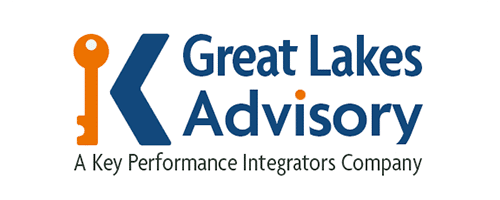Statistics from the U.S. BLS indicate that only one in four businesses survive more than 15 years. Most actually fail in the first few years, but even the ones that make it out of their nascent stage run the risk of not being able to keep up with the competition. Inability to improve your business processes means you can eventually get left behind.
Just doing things the way they have always been done means choosing to live with the mistakes, problems, and inefficiencies involved. Business process optimization isn’t optional or nice to have. It’s imperative.
What Is Process Optimization?
The process optimization definition can be stated as adopting the best practices to achieve desired outcomes within an established set of parameters and not violating important constraints along the way. Processes aren’t supposed to be there just to take up room within an organization’s internal structure. Rather, they are supposed to streamline things in ways that facilitate the individual components of business activities.
Process optimization can improve core business activities for more efficient creation and delivery of products, services, and goods. However, even secondary and supporting processes, from technical support to human resources, can be optimized to further support the broader organization and reduce overhead while boosting profit margins.
Effective business process optimization happens when you see what you can do better with the resources that you have at your disposal. While some business growth only happens with the acquisition of new resources, optimizing your business processes is all about doing better with what you already have available to you right now.
What Is Business Process Optimization?
What is the business optimization definition? It’s a practice of boosting the efficiency in your organization by improving the specific processes that are currently part of your operations. It entails planning and then executing a project life cycle at the highest level of enhancement that is practical and available to you.

Why Optimize Processes?
Why would you want an optimized process? Simply because you want everything running at its utmost potential.
Microsoft Azure was once deployed without following its established optimization processes. The results were over 4 billion hours of user downtime, billions of dollars in revenue lost, and a reputation hit people are still talking about.
It’s impossible to track every step of every process all of the time. Optimized and standardized processes reduce errors, streamline operations for cost and time, and are more likely to produce consistent results.
Video games and software makers nearly always have bug-hunting teams looking for problems in the coding, fixing them, and then rolling out updates and patches. Carmakers regularly issue service alerts or even recalls to dealerships and mechanics to fix known issues for drivers. Every industry can benefit from updating its processes to better serve shareholders, employees, and consumers all at the same time.
Benefits of Business Process Optimization
Optimizing business processes is a popular buzzphrase across many industries right now, but do the people tossing it around incorporate conversations understand what it means and the benefits involved?
Many companies believe that in order to stay competitive or grow, they need to go out and acquire new resources or even from competitors. That’s often a viable growth path, but smart businesses understand that they can grow from within.
Optimizing your current business processes means getting more of what you’ve got right now. That means you can streamline things to deliver products and services better and faster than ever before to your market segment. However, it also means you can keep generating your current revenue levels for less cost and overhead. The result? Higher profit margins.
Regulatory Compliance
Being noncompliant with your industry’s regulations can be needless friction holding you back from more success. Standardized and optimized processes keep you compliant with regulations more often than not. You’ll be less likely to get hit with fines or even orders to cease operations until you get straight again.
Reduced Risks
Reducing risks means identifying potential risks and then taking steps to mitigate them. You should primarily do this to protect the health and safety of your employees and customers. However, you should also do it just to prevent needless financial waste and downtime responding to various incidents. This should be very important to you, so it is worth consulting an optimization advisor to help your company with this issue.
Streamlined Operations
Streamline your operations whenever you can. Anything that’s repetitive for employees can potentially result in mindless boredom that increases risks while decreasing efficiency. Standardize things so that employees can do tasks as good habits. Whenever you can, automate things to make sure they are done the same way each time that they are done. The sheer consistency you get in results is worth it, although you’ll also enjoy how much cheaper and faster the results are likely to become.
Maintain Consistency and Quality Assurance
Consistent quality in your output of goods and services is often an understated factor in determining the success of a business. Consumers love going with a known winner or something that consistently meets their expectations. That’s why McDonald’s is so successful. No matter which one you visit on the planet, you know what the fries are going to taste like. Consistent quality in what you sell means consistently good reviews and feedback online, and that’s where you draw in new business.
Better Management of Resources
Business process optimization means getting more out of the resources you currently have. You might have areas of inefficiency that you can improve upon so that you increase output while reducing resource use. For that matter, you might have areas of redundancy that can be eliminated or merged so you free up more of your working resources for other uses or just more profitability. If you want a stream to flow more freely, it’s better to pull out the rocks than add more water to them.
Enhanced Customer Satisfaction
No matter how much you change things internally inside your organization, what will eventually make or break you is satisfying clients or customers. In every industry, you have something to sell and people or entities to sell it to. Optimized processes should result in higher quality levels in your offerings, and you’ll hopefully be quite consistent about that. Engage your demographics to find out where they feel disappointed, unfulfilled, or friction so you can address these matters with specific optimization endeavors.
Challenges of Process Optimization
If you want to optimize work processes, you are likely to face some challenges along the way. Fortunately, optimization process results are often well worth the effort.
Leadership Challenge
Whether it’s you or someone you delegate to, you need to be in a position with genuine leadership skills and experience in charge of optimizing business processes. Working with many projects, tasks, people, and stakeholders involved means a lot of juggling. Someone who knows how to communicate and inspire others will do well.
Poor Team Collaboration
Communication is crucial in optimizing business processes, but you might discover that communication issues can be solved by optimizing processes. You might have two different teams reporting the same problem but differently when in fact they are both facing the same issue. Sometimes, just getting everyone involved in communicating during process optimization will wind up clearing up some things.
Inefficient Implementation
One huge danger in business process optimization is when the attempt to optimize a process is itself a project that is run without much efficiency. The more departments or teams that are involved, the more likely it is that one or two of them might miss their deadlines and stall the whole process.
Inadequate Training
An optimized process involves at least one change in the way people do things. Your training needs to make sure everyone gets out of the old habits and into the new ones. That training has to be consistent and effective, but you also need to make sure it’s still in place for new hires down the road.
Not Problem-Solving
Business processes that are optimized should increase efficiency. However, not all rises inefficiency are productive. Make sure you deal with the root problem in each area. Over-optimizing one area while ignoring another might create bottlenecks. That just gives you more problems to solve and takes you in the wrong direction.
Jumping the Gun
As eager as you might be to create improved efficiencies that you can show off to all involved, don’t get ahead of yourself. Make sure you mind every detail so that your new optimized process is functional, in place, and trackable. Always watch out for new opportunities to optimize things that reveal themselves along the way.
The 5 Cs of ccc
To truly know what is process optimization, you should also know the 5 C’s involved with it. Doing so enables you to stay focused on the important facets of optimizing your various processes. When you are mindful of the most essential variables, you’ll keep yourself from getting overwhelmed by all the minutiae.
Customer First
If you’re ever unclear about what perspective you should use when improving a business process, then do so from the point of view of your consumers or customers. Forbes has data suggesting that nearly 75% of businesses reporting above-average client satisfaction have stronger financial foundations than their competition. Always remember that you make money because people or clients spend money on your products and services. Keep them happy.
Conscientiousness (Awareness)
Define concrete key performance indicators you can use to track your performance and improvements, but also make sure you pay mindful attention to them along the way. Know when you’re on track, when you need to make changes, and when you’ve been successful in any of your efforts. Let them inspire more success.
Collaboration
Business process optimization might be a responsibility that falls on the shoulders of a specific project manager, but they can’t do it all on their own. They need to constantly collaborate with all stakeholders along the way. This is especially true of frontline personnel who deal with specific processes on a daily basis.
Communication
Communicating with collaborative partners needs to happen as instantly as possible in all cases. Let everyone know what the KPIs are and where you stand on them all the time. If changes in direction are necessary, then keep everyone up to speed so that no one is moving blindly in the wrong direction.
Continuous Execution
Optimizing business processes is not a one-shot deal. You have to keep doing it. Hopefully, your optimized processes serve you well for a long time, but as you optimize processes, you may create new bottlenecks. Ongoing optimization is how you address new pain points that come up while you eliminate your old ones.
5 Steps for Business Process Optimization
Are you unsure how to optimize process components of your organizational structure? There are only five process optimization steps that you need to take. It might seem counterintuitive that you can solve what are currently huge issues with a simple sequence of steps, but you don’t always have to reinvent the wheel to get things moving better.
#1. Identify
The identification stage may involve identifying two different things. For starters, you need to identify every business process that might be in dire need of optimization. Second, you would cherry-pick the individual process to optimize first before all others. You need to move through all this step by step. If you want an optimization professional to help you sift through all of this, then schedule a meeting with one now.
#2. Rethink
Too many organizations approach process optimization with the attitude of needing to overhaul something from scratch. That perspective is a necessity at times, but most of the time, it’s overkill.
Just look for ways to improve your current processes with the resources that you already have. If only changing 1% of your resources winds up leading to a 5% improvement in efficiency or outcome, then you’re getting a substantial return for the time and energy you invest into a change.
#3. Analyze
As you try and optimize any process, you need to list specific objectives and goals that you hope to achieve. Once you have those identified, you will then need to develop and implement plans that should get you where you want to be. However, you also need to know that you’re making progress. Decide on specific measurements you can make in each area, and then develop key performance indicators you can track objectively.
#4. Implement/Automate
Implementation of any process means you will have people repeating the same steps over and over again. Repetitive tasks happen in any business, but the more you can automate them, the better. Automating processes or single steps offers two benefits. First, it can free up human time and attention so they can focus on other things. Second, it reduces errors and mistakes.
#5. Monitor
Monitoring your business processes helps you identify the ones that need optimization. However, monitoring is also essential in making sure an optimized process stays that way over time. Without proper attention and mindfulness, it might deteriorate in its new efficiency and wind up becoming another suboptimal process. Even processes that stay optimized as designed may eventually be something that can be replaced and improved upon.
Examples of Business Process Optimization
Knowing specific process optimization examples helps you visualize the concrete steps that your own business might take in reinventing parts of itself.
Automating Your Social Media Posts
Social media presence is crucial to any modern company, and posting three times a week helps you stay engaged with your followers. You probably have someone creating content and manually posting it, but what if they call in sick or go on vacation? Automated posting software puts your content up on its own for you. You can even schedule posts to go live when your followers are most likely to be online and see them.
Empowering Your Employees With the Right Resource
Any business that doesn’t have processes to start with is putting its leadership under undue stress. From supervisors to upper management, leaders in an organization without processes get asked by their subordinates all the time how things should be done. Instituting processes, and making sure they’re the right ones, means you can automate many tasks and empower employees to get things done without nearly as much supervision.
How Great Lakes Advisory Can Help You Optimize Your Business Processes
You can start the business process of optimization on your own using the right software, but you can also bring industry experts to your side for their unique perspectives.
With Great Lakes Advisory at your side, we can go through a sequence of business process reviews, visualization, analysis, and redesign to make your company a more efficient and nimble operation. If you’re not sure where to start, then contact a process optimization specialist to get help with this challenge.
FAQ
Who should take charge of process optimization?
A dedicated project manager usually oversees the business optimization processes. They set goals, create plans, and execute steps in those directions. They don’t make decisions on their own, however, as all stakeholders should be involved.





